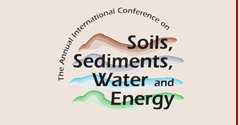Article Title
Influence Of Aging In Soil On The Dermal Penetration Of Hexavalent And Trivalent Chromium
Abstract
Sensitive individuals may develop allergic contact dermatitis (ACD) from exposure to chromium contaminated soil. However, health risk assessments often do not consider the amount of metal in soil that is absorbed by the body (bioavailability). Instead, they rely on the total concentration of metal that can be extracted from soil by rigorous procedures. This practice can overestimate health risks and soil remediation goals because metals can be sequestered in soil with time (“aging”) thereby decreasing bioavailability. In this study, the effects of aging in soil on the dermal penetration of trivalent chromium as chromium chloride or hexavalent chromium as sodium chromate were evaluated in two soils – Atsion and Keyport. Dermal penetration was measured in vitro through dermatomed pig skin by Teflon flow-through diffusion cell methodology. After four months in soil, the dermal penetration of both species was decreased by 93 - 96% relative to pure chromium (without soil). While an aging effect was prominent for Cr (III) in the Atsion soil, surface adsorption was important in the Keyport soil. The dermal penetration of Cr (VI) was similar in both soils after aging. The data suggest that soil cleanup levels for chromium based on the ACD health endpoint will be dependent on soil type and time in soil.
Recommended Citation
Skowronski, Gloria A.; Turkall, Rita M.; and Abdel-Rahman, Mohamed S.
(2010)
"Influence Of Aging In Soil On The Dermal Penetration Of Hexavalent And Trivalent Chromium,"
Proceedings of the Annual International Conference on Soils, Sediments, Water and Energy: Vol. 11, Article 5.
Available at:
https://scholarworks.umass.edu/soilsproceedings/vol11/iss1/5
